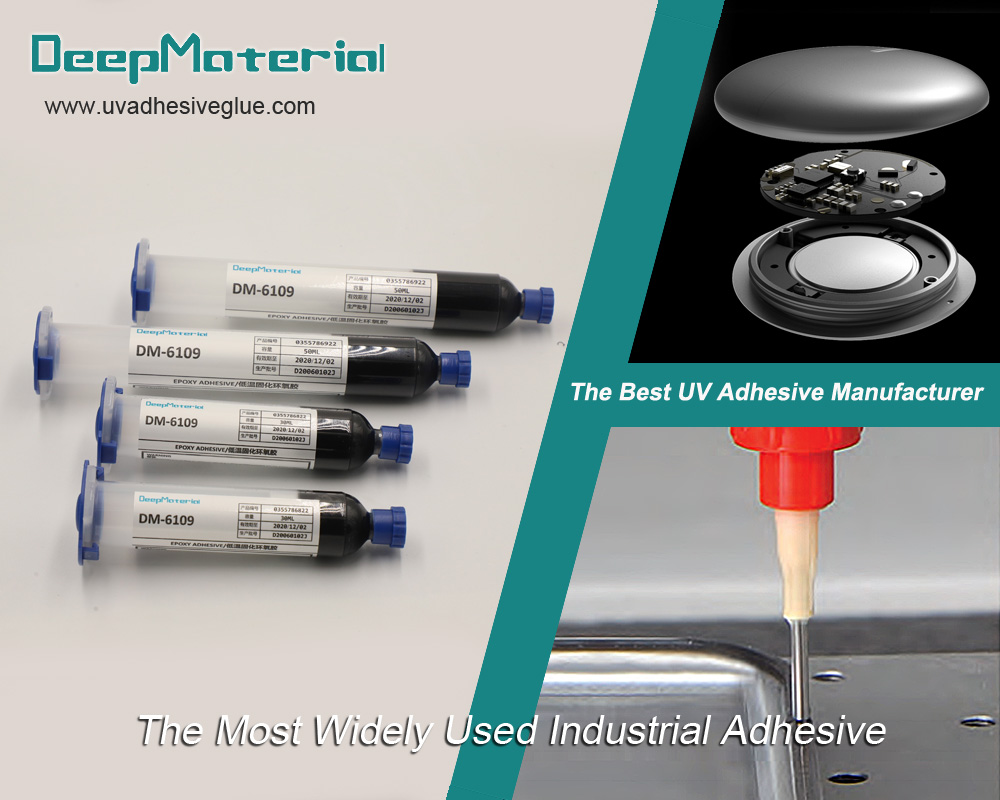Electronic adhesives, also known as conductive adhesives, are specially formulated adhesives that exhibit electrical conductivity. They are designed to provide both adhesive properties and electrical conductivity, making them suitable for various applications that require electrical connections.
Conductive adhesives can exhibit a wide range of resistivity values, depending on the specific formulation and intended application. Generally, the resistivity of conductive adhesives falls within the range of micro-ohm centimeters (µΩ·cm) to milli-ohm centimeters (mΩ·cm). Lower resistivity values indicate higher conductivity. The conductivity of electronic adhesives is achieved by incorporating conductive fillers into the adhesive matrix, and the conductivity properties is depend on their composition and the type of conductive filler used. Conductive adhesives typically contain conductive fillers or particles dispersed within a polymeric matrix or adhesive binder. The conductive fillers can be metallic particles, such as silver, copper, nickel, or graphite.
These fillers provide a conductive path within the adhesive, allowing the flow of electrical current. Commonly used conductive fillers include:
Silver particles: Adhesives with silver particles offer high electrical conductivity due to the excellent conductivity of silver. They can achieve low resistivity values, typically in the micro-ohm centimeter range.
Silver-coated particles: These fillers consist of non-conductive particles coated with a layer of silver. They provide conductivity while offering lower material costs compared to pure silver fillers.
Carbon-based materials: Adhesives can incorporate carbon-based materials like graphene, carbon nanotubes, or carbon black to achieve conductivity. Carbon-based fillers offer moderate conductivity and are often used in applications where flexibility or lower cost is desired.
Copper particles: Copper is another commonly used filler for achieving electrical conductivity in adhesives. It has good electrical conductivity and can provide lower material costs compared to silver fillers. Copper particles can achieve moderately low resistivity values.
Nickel particles: Nickel fillers are used in electronic adhesives to provide conductivity. They offer lower cost compared to silver or copper fillers but may have higher resistivity values.
Other metal particles: Other metal fillers, such as gold, aluminum, or tin, can also be incorporated into electronic adhesives to achieve conductivity. These metals have varying levels of electrical conductivity and may be used in specific applications where their properties are beneficial.
Conductive polymers: Polymers that have been doped or modified to exhibit electrical conductivity can be used as fillers in electronic adhesives. Conductive polymers offer unique advantages such as flexibility, lightweight, and processability.
The selection of conductive fillers depends on the specific requirements of the application, such as desired electrical conductivity, material costs, mechanical properties, and compatibility with other components in the system. Different combinations and concentrations of fillers can be used to optimize the adhesive’s electrical and mechanical performance. The conductivity of electronic adhesives is typically measured in terms of electrical resistivity or conductivity. Typically, the conductivity of electronic adhesives ranges from several ohms to a few milliohms per square. Conductive adhesives are engineered to have low resistivity, allowing for the flow of electrical current across the bonded interface.
Electronic adhesives with higher conductivity are suitable for applications that require good electrical connections, such as bonding electrical components, attaching flexible circuits, providing EMI/RFI shielding, or joining conductive traces on circuit boards. They can be used as an alternative to traditional soldering methods in certain cases. Some common applications include attaching surface-mount devices (SMDs), connecting flexible circuits, bonding RFID tags, repairing traces on printed circuit boards (PCBs), or providing grounding paths in electronic assemblies. Conductive adhesives offer a range of conductivity levels,they can exhibit resistivities ranging from milliohms to tens of ohms per square, depending on the formulation. This enables their use in various applications, including:
Bonding electrical components: Conductive adhesives can be used to bond and connect electronic components, such as integrated circuits (ICs), surface-mount devices (SMDs), flex circuits, and chip-on-board (COB) assemblies. The adhesive provides both mechanical bonding and electrical connectivity between the components.
Flex Circuit Connections: Flex circuits, which are thin and flexible circuits, often require adhesive bonding to establish electrical connections. Conductive adhesives can be used to bond flexible circuits, providing both mechanical adhesion and electrical conductivity.
EMI/RFI shielding: Electronic adhesives with conductive properties are employed for electromagnetic interference (EMI) and radio frequency interference (RFI) shielding. They can be used to create conductive seals or gaskets, providing a shield against electromagnetic radiation.
Trace Repair: In the event of a damaged trace on a PCB, conductive adhesives can be used to repair the connection. By applying the adhesive to bridge the gap in the trace, conductivity can be restored.
Grounding and Electrical Connections: Conductive adhesives can be utilized to establish electrical connections and provide grounding paths in electronic assemblies. They are commonly used in applications where soldering may not be feasible or desirable.
Printed electronics: Conductive adhesives are utilized in the field of printed electronics, where circuits and electronic components are directly printed onto substrates. They enable the creation of flexible and lightweight electronic devices, such as flexible displays, sensors, and wearable electronics.
Thermal management: Some conductive adhesives also offer good thermal conductivity, allowing them to be used for heat dissipation and thermal management in electronic devices. These adhesives can help transfer heat away from heat-generating components, such as CPUs or power electronics, to heat sinks or other cooling mechanisms.
It’s important to note that while electronic adhesives provide electrical conductivity, they may not have the same conductivity as metals or other highly conductive materials. Therefore, their use should be carefully evaluated based on the specific requirements of the application. Factors such as the specific formulation, curing conditions, and the bonding surfaces involved, mechanical strength, temperature resistance, and environmental compatibility should also be considered when selecting an electronic adhesive for a particular application. The exact conductivity properties of electronic adhesives can vary among different products and manufacturers. Therefore, it is advisable to consult specific product datasheets or contact adhesive manufacturers to obtain precise information on the conductivity characteristics of a particular electronic adhesive.
For more about choosing the electronic adhesive,you can pay a visit to DeepMaterial at https://www.uvadhesiveglue.com/for-electrical-appliances/ for more info.


